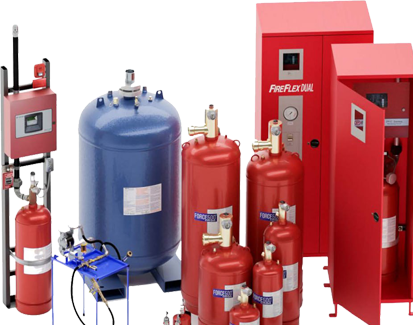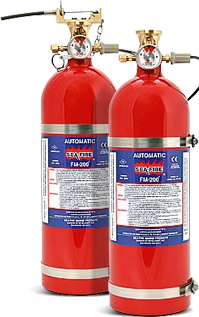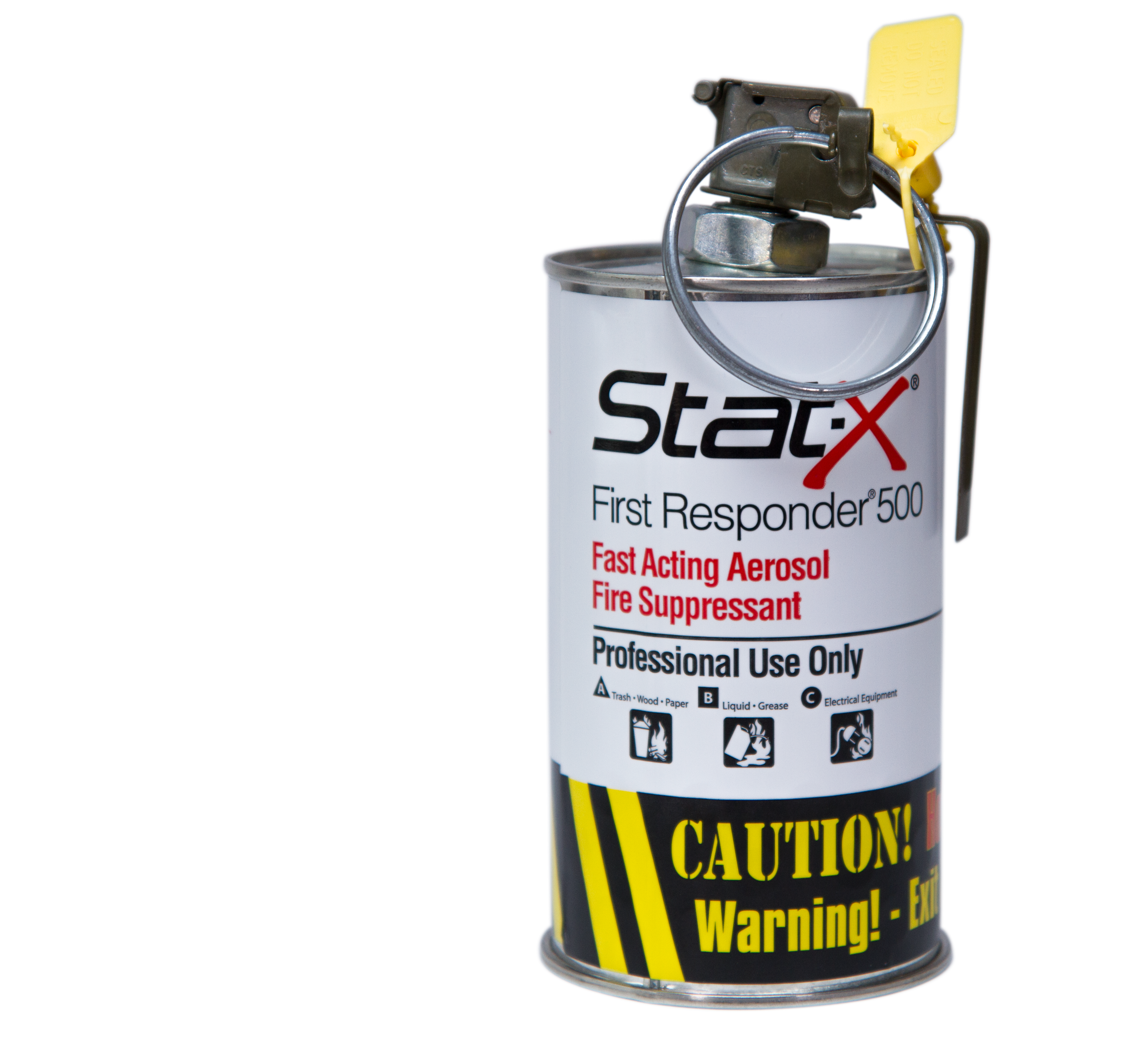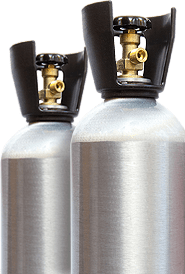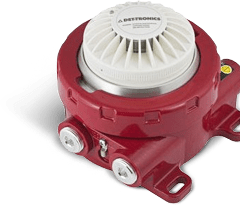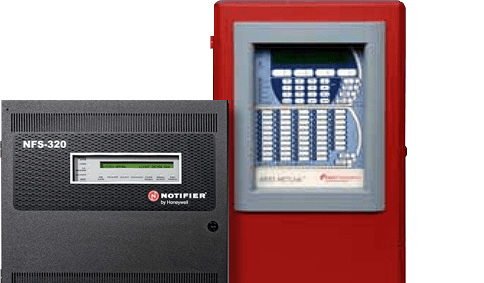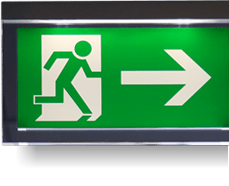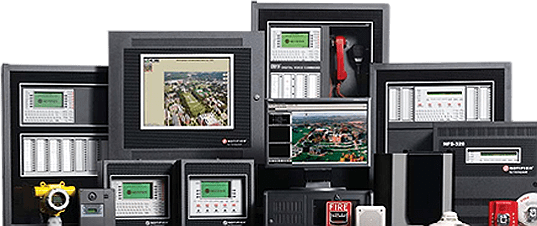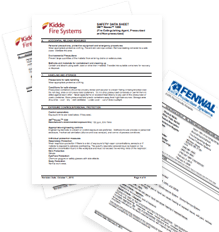How Temperature Extremes Affect Fire Detection and Suppression System Performance
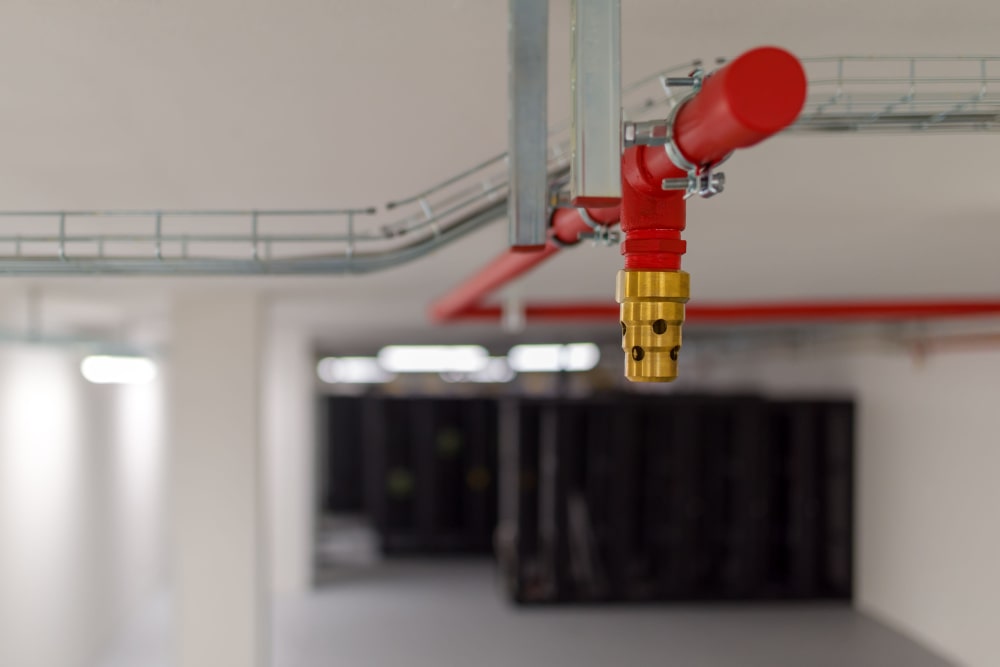
Canadian facility managers and engineers face a unique challenge: safeguarding assets, infrastructure, and personnel in some of the world's most demanding climates. From deep winter chills in Winnipeg to sweltering summer heatwaves in Toronto, Canada's temperature extremes can wreak havoc on the performance and reliability of fire detection and suppression systems . Ensuring these systems operate effectively — regardless of climate — is not just a matter of compliance with Canadian codes; it's essential to business continuity, worker safety, and asset protection.
This guide explains how temperature extremes impact fire safety systems, highlights the industries most at risk, and shares best practices — aligned with Canadian fire codes and expert recommendations — for adapting your systems to our country's variable climate.
Explore further
The Hidden Risk: Temperature Extremes and Fire Safety
Why Temperature Matters in Fire Detection and Suppression
Modern fire detection and suppression systems are highly sensitive to their operating environment. Dramatic shifts in ambient temperature — whether sudden heat or deep cold — can interfere with the accuracy of fire detectors and the effectiveness of suppression agents. If left unchecked, these impacts can lead to false alarms, missed threats, or catastrophic failures at critical moments.
For Canadian facilities, from cold storage warehouses to high-tech data centres, managing alarm and suppression systems under extreme temperature conditions is vital. The consequences of system failure — property loss, business interruption, and regulatory penalties — make adaptation a top priority.
Industries Most at Risk of Temperature-Related Malfunctions
- Cold storage and refrigerated warehouses: Constant exposure to sub-zero temperatures can stress both detection and suppression equipment.
- Industrial facilities with outdoor operations: Direct sunlight and seasonal changes make it challenging to maintain stable indoor temperatures.
- Power generation sites (solar farms, wind farms, remote substations): Often located in harsh or isolated environments where temperature swings are common.
- Data centres and server rooms: While climate-controlled, they remain vulnerable to overheating risks and temperature-related system drift.
- Offshore or remote facilities: Locations far from urban centres, often facing compounded risks due to harsh weather and delayed emergency response.
How Heat Affects Fire Detection and Suppression
Overheating Issues with Detection Equipment
Constant exposure to high temperatures can cause fire detectors to become less sensitive. Photoelectric and ionization smoke detectors may suffer "sensory drift" when exposed to excessive heat, delaying or preventing alarm activation during a genuine fire. Devices such as VESDA (Very Early Smoke Detection Apparatus) units, especially in dusty or contaminated environments, may also become less reliable or require more frequent maintenance.
Heat-Related Risks in Suppression Systems
- Clean agent systems (like FK-5-1-12/Novec 1230): These agents can expand when released into a hot environment, creating excess pressure and reducing their ability to suppress fires in small or tightly sealed rooms.
- Premature discharge: Elevated temperatures may cause suppression agents to be released unintentionally, risking both equipment downtime and compliance issues.
- Component failure: Heat can affect the electronics and wiring of suppression systems, jeopardizing both activation and monitoring functions — especially where electrical equipment is involved.
How Cold Temperatures Impact System Functionality
Detector Failure or Delay in Cold Conditions
- Slower smoke movement: Cold air slows down the movement of smoke particles, potentially delaying detection and the activation of suppression systems.
- Battery performance: Low temperatures can significantly reduce battery efficiency, threatening the reliability of battery-backed alarms and remote detection devices.
- Material brittleness: Plastics and wiring insulation may become brittle in extreme cold, leading to cracking, electrical shorts, or component failure.
Suppression Agent Performance in Freezing Environments
- Frozen pipes: Water-based sprinkler systems are at risk of freezing, rendering them inoperable during an emergency.
- Clean agent systems: Certain agents may thicken or depressurize in extreme cold, reducing their ability to disperse and extinguish a fire.
- Carbon dioxide (CO₂) systems: While CO₂ is effective in cold weather, the delivery mechanisms may suffer if not properly insulated.
- Nitrogen suppression: While generally cold-tolerant, nitrogen systems can lose pressure at sub-zero temperatures, potentially impairing discharge performance.
Engineering Solutions for Temperature Extremes
Cold Environment Adaptations
- Heated enclosures: Install heated cabinets around critical components (valves, gauges, detectors) to keep systems operational in freezing weather.
- Dry pipe sprinkler systems: These are designed to prevent water from sitting in pipes until activation, minimizing the risk of freezing.
- Clean agents with wide temperature tolerances: FK-5-1-12 (Novec 1230) is suitable for facilities unable to maintain consistent temperatures.
- Ruggedized detectors: Use sensors specifically designed for cold storage, cold rooms, and outdoor applications.
Heat Resistance and Ventilation Strategies
- Insulation and shielding: Ensure control panels and wiring are properly insulated against both heat and UV exposure.
- Ventilation: Design all high-risk areas, especially those exposed to direct sunlight, with adequate ventilation to prevent dangerous temperature spikes.
- Shaded or cooled system placement: Position CO₂ and clean agent storage in shaded areas or use dedicated cooling enclosures to maintain safe temperatures.
- Routine pressure checks: Implement regular system checks — especially during summer — to confirm suppression agents remain within recommended pressure ranges.
Best Practices for Maintenance in Harsh Climates
Inspection and Pressure Checks by Season
- Seasonal inspections: Have your fire safety systems professionally inspected at least twice a year, ideally in spring and autumn.
- Pressure adjustments: Regularly check and adjust system pressures as temperatures fluctuate; pressure can rise in summer and drop in winter, affecting system performance.
- Visual checks: Conduct routine inspections for cracks, leaks, or other damage to system components — especially after major temperature changes.
Smart Monitoring and Remote Diagnostics
- Temperature-compensated sensors: Deploy multi-sensor fire detectors with built-in temperature compensation features.
- Remote health monitoring: Use software and connected systems to track the status of fire detection and suppression equipment in real time, identifying problems before they result in failure.
- Collaboration with local fire departments: Integrate your detection and alarm systems with local fire services, and involve them in emergency planning and regular drills.
Final Recommendations
- Account for your environment: Select fire detection and suppression systems not only by hazard class but by the environmental extremes typical in your region.
- Collaborate with specialists : Work closely with certified fire protection professionals, electrical engineers, and HVAC experts to ensure system reliability.
- Custom solutions for critical industries: Avoid "one-size-fits-all" systems — customize your fire protection strategy for the specific challenges of your facility, whether it's a BESS (Battery Energy Storage System) installation, a cold storage warehouse, or a data centre.
- Canadian code compliance: Ensure all systems meet or exceed relevant Canadian fire codes and standards, such as CAN/ULC-S524 and NFPA guidelines.
About the Author
This article was developed in collaboration with certified fire protection engineers at Control Fire Systems Ltd., an established leader in Canadian fire detection and suppression systems. Our team is ULC-listed and fully accredited for installation and maintenance, with decades of experience protecting critical facilities across Canada.
Fire safety in Canada demands more than just the right technology — it requires careful adaptation to our country's unique climate. Don't leave your facility exposed to avoidable risks. For a comprehensive fire safety assessment, or to discuss system upgrades for temperature extremes, contact Control Fire Systems Ltd. today.






